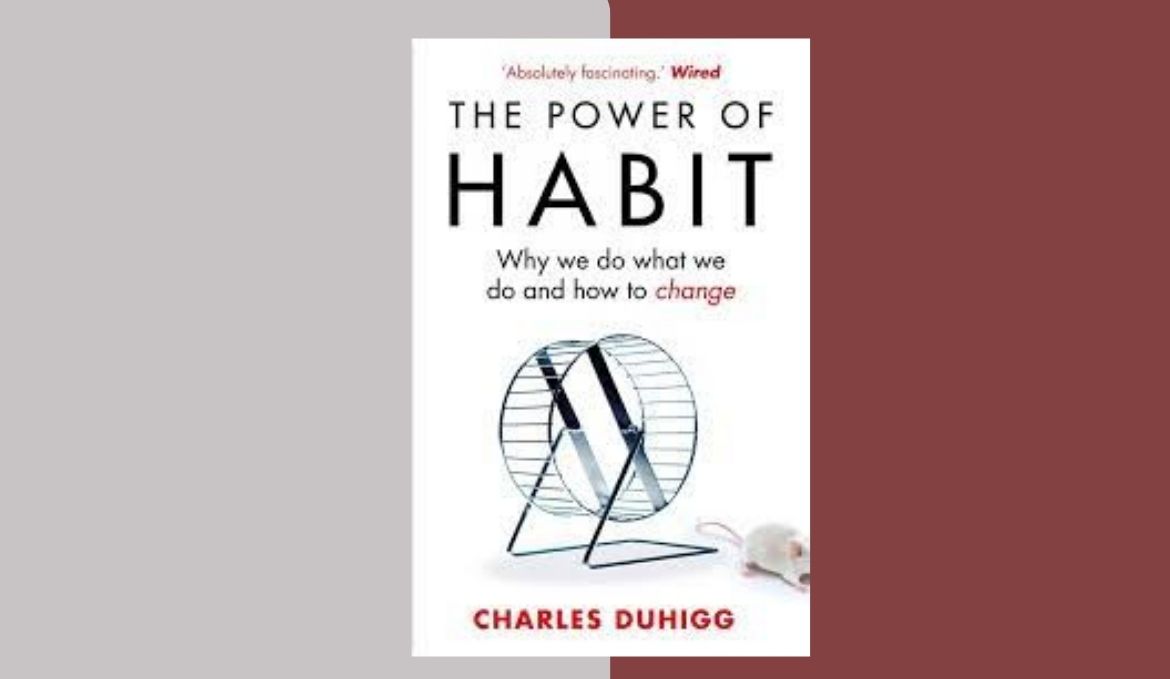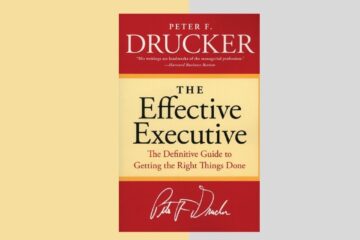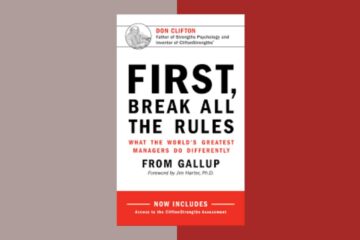Charles Duhigg’s book The Power of Habit, which examines the science underlying our habits and how they affect our lives, is a captivating read. According to Duhigg, knowing how habits function might enable us to make beneficial changes in both our personal and professional lives.
The Habits of Individuals, The Habits of Successful Organizations, and The Habits of Societies are the three sections that make up the book. Duhigg uses case studies and examples throughout the book to highlight the importance of habits and how they may be altered. Your thoughts will be left on your own habits and how they affect your life after reading The Power of Habit.
Part One – The Habits of Individuals
The author of “The Power of Habit” by Charles Duhigg examines the science underlying habits and how they affect our lives. The book is broken into three sections, with the first section concentrating on people’s habits. We’ll explore the most important lessons from Part One in this post and how they might help us better understand our own behaviors.
The habit loop, a three-step process that serves as the basis for all habits, is introduced in the first chapter of the book. A cue, a routine, and a reward make up the loop. The reward is the satisfying result that reinforces the action, whereas the cue initiates the habit and the routine is the behavior that follows.
Overall, “The Power of Habit” Part One offers insightful information about people’s habits. We may start making positive changes in our own lives by comprehending the habit loop, the neurobiology of habits, the function of willpower, and the significance of believing. This book is a crucial tool for anyone interested in personal development and self-improvement, regardless of whether we wish to break old habits, create new ones, or simply understand ourselves better.
In conclusion, “The Power of Habit” Part One offers an intriguing examination of people’s routines. Charles Duhigg has produced an invaluable tool for those trying to improve their life by delving into the science behind habits and offering helpful tips for changing them. This book is a must-read whether you’re trying to break a bad habit or want to start a new one. So why not get a copy and get started on your path to improved habits right away?
Chapter 1: The Habit Loop – How Habits Work
The cue, the routine, and the reward are the three components of the habit loop. The cue is the habit’s starting point, the routine is the activity that comes next, and the reward is the satisfying result that reinforces the habit. Repeatedly engaging in a particular behavior in response to a particular cue strengthens the habit, which is how this loop is formed.
Duhigg uses his personal practice of having a cookie every afternoon as one of many illustrations of how the habit loop works. In this instance, boredom served as the cue, eating cookies served as the routine, and the sugar rush that resulted in a momentary boost in energy served as the reward. By understanding this habit loop, Duhigg was able to change his behavior and replace his cookie habit with a healthier one.
This chapter’s main lesson is that habits are merely behaviors that have been reinforced over time; they are neither inherently good nor negative. As a result, we can alter our routines to form new habits by recognizing the signal and reward for each habit.
Duhigg further demonstrates how habits may be effective instruments for success and productivity. We can automate some behaviors and save our brain energy for more important tasks by developing excellent habits. For instance, a writer might make it a habit to write for an hour each morning so that they can concentrate on other things the rest of the day.
Chapter 2: The Craving Brain – How to Create New Habits
Eugene Pauly, a former smoker who was able to quit by replacing his smoking habit with a new routine that satisfied the same craving, is used as an illustration by Duhigg. Pauly started taking short breaks throughout the day to walk up and down a flight of stairs, which gave him the same sense of fulfillment as smoking. Pauly was able to satisfy his craving without suffering the side effects of smoking by starting this new routine.
Duhigg likewise clears up that for make another propensity, we really want to distinguish the desire that drives our way of behaving. This requires comprehending the habit’s underlying motivation, such as our need for social connection, which drives our habit of checking social media.
We can experiment with various routines that healthier ways to satisfy the craving once we have identified the craving. This could mean finding a new way to satisfy the same craving or changing a bad habit for a healthier one, as Pauly did with his smoking habit.
Chapter 3: The Golden Rule of Habit Change – Why Transformation Occurs
In Part 3 of “The Power of Habit” by Charles Duhigg, the author presents the “brilliant rule” of habit change, which expresses that to make progress with a habit, we really want to keep a similar sign and prize, however, change the daily schedule. Duhigg contends that by changing the daily practice, we can make another habit that fulfills a similar desire as the former one, yet in a better or more useful way.
In order to illustrate how the golden rule might be used to assist people overcome their alcoholism, Duhigg cites the example of Alcoholics Anonymous. AA assists people in creating new routines that satisfy the same craving without having to use alcohol by preserving the same cue (the want to drink) and reward (the sense of relaxation or escape) but changing the action (attending a meeting or speaking to a sponsor).
The golden rule, according to Duhigg, can be used to break any habit, not just addictions. We can experiment with different routines until we find one that satisfies the same demand in a healthier or more beneficial way by identifying the trigger and reward of a habit.
Part Two – The Habits of Successful Organizations
The author of “The Power of Habit” by Charles Duhigg examines the habits of effective organizations and how they are able to effect long-lasting change in Part Two of his book. According to Duhigg, knowing the habit loop and utilizing it to form new habits that produce advantageous results are the keys to success.
In general, Part Two of “The Power of Habit” offers insightful information about how effective businesses take advantage of the habit loop. Organizations may develop new habits that result in successful outcomes and long-lasting change by understanding the power of habits and how they influence behavior.
Chapter 4: Keystone Habits – Which Habits Matter Most
Chapter 4 of “The Power of Habit” centers around cornerstone habits, which are habits that meaningfully affect other habits and parts of an association. These habits are considered critical on the grounds that they have a gradually expanding influence that can prompt tremendous changes in an association’s way of life and efficiency.
Duhigg shares a few instances of cornerstone habits in real life, including the narrative of Alcoa President Paul O’Neill, who made work environment security a cornerstone habit and saw it lead to a critical expansion in profits. Another model is the tale of Starbucks, which made the client experience a cornerstone habit and saw it lead to a change of the organization’s way of life and expanded profitability.
The vital focal point from this part is that distinguishing and developing cornerstone habits can be a powerful instrument for changing associations. By zeroing in on one key habit, pioneers can make a chain response that prompts far-reaching change and further developed execution.
Chapter 5: The Habit of Success – When Willpower Becomes Automatic
The concept of willpower and how it can be used to form effective habits are covered in depth in Chapter 5 of “The Power of Habit”. Willpower, according to Duhigg, is like a muscle that may be developed via use and exercise but can also weaken over time.
The concept of “small wins” and how they might establish a beneficial feedback loop that results in increased success are also discussed in this chapter. Duhigg cites Olympic swimmer Michael Phelps as an illustration. Phelps exploited little victories in his training to boost his self-confidence and perform better.
The vital important point from this part is that by zeroing in on making little habits and celebrating little wins, people and associations can gather speed and make a habit of progress. By utilizing willpower to make programmed habits, individuals can beat impediments and accomplish their objectives all the more without any problem.
Chapter 6: The Power of Crisis – Creating Habits Through Accident and Design
The author of “The Power of Habit” explores how crises can act as a potent stimulus for the development of new habits in chapter 6. In his examples, Duhigg shows how businesses and organizations have adopted new routines and procedures in response to disasters.
The tale of Paul O’Neill, who took over as CEO of the aluminum company Alcoa during a crisis, is one illustrative example. O’Neill adopted a new practice of placing worker safety above all else instead of only concentrating on solving the current issues, which resulted in considerable enhancements in both safety and productivity.
The chapter also looks at how “shocks to the system,” or deliberate disturbances, might be used to break old habits and form new ones. Leaders can create a setting where new habits can flourish by consciously implementing change inside an organization.
The potential for crises and deliberate disruptions to bring about positive change and establish new habits in companies is emphasized throughout this chapter.
Chapter 7: When Companies Predict and Manipulate Habits
In his book The Power of Habit, Duhigg explores how businesses utilize data and analytics to forecast and sway customer habits. He gives instances of how businesses, such as Target and Procter & Gamble, have used data analysis to find trends in consumer behavior and adjust their marketing tactics appropriately.
The ethical ramifications of businesses exploiting this data to influence consumer behavior are also covered by Duhigg. He contends that although these strategies may be successful, businesses must employ them in an ethical and open manner.
The chapter concludes by highlighting the significance of comprehending habit formation and the potential repercussions of businesses employing this knowledge to their advantage. Important issues regarding the morality of habit manipulation and the responsibility of customers for managing their own habits are brought up by this.
Part Three – The Habits of Societies
In Part Three of “The Power of Habit,” Duhigg investigates how habits influence social orders and organizations, including how they are framed, how they can be changed, and their effect on people and networks.
Chapter 8 examines how social developments are ignited by the arrangement of new habits, like the social equality development and the ladies’ testimonial development. Duhigg underlines the significance of making little, positive habits that can prompt bigger change and move aggregate activity.
In Chapter 9, Duhigg analyzes the job of friend tension in molding accepted practices and how people can utilize this information to impact conduct inside their networks. He likewise investigates how cultural habits can be changed using social impetuses and how these progressions can have a positive meaning for general well-being and security.
Generally, Section Three offers a provocative investigation of the job of habits in shaping society and gives experiences into how people and associations can utilize this information to impact positive change.
Chapter 8: How Movements Happen
In Chapter 8 of “The Power of Habit,” Charles Duhigg investigates how social developments structure and flourish. He contends that fruitful developments all offer one essential component: the formation of a feeling of local area among their individuals. By making a common personality and set of values, development pioneers can propel individuals to make a move and accomplish genuine change. Duhigg focuses on the Social liberties development and the Montgomery Transport Blacklist as instances of effective developments that were based on a groundwork of the local area.
Another vital part of fruitful developments, as indicated by Duhigg, is the utilization of “weak ties.” These are the free associations we have with individuals we may not know quite well yet who share a portion of our inclinations or convictions. Feeble ties can be powerful in aiding the spread of thoughts and assembling individuals to make a move. Developments that can take advantage of these powerless ties and transform them into a feeling of shared personality and reason have a more prominent likelihood of coming out on top.
Duhigg additionally investigates the idea of “keystone habits” with regard to social developments. These are little, reasonable habits that can make a cascading type of influence of positive change. By zeroing in on these cornerstone habits, developments can gain ground toward their objectives and make a feeling of energy that can spur individuals to continue to push for change.
Chapter 9: The Neurology of Free Will – Are We Responsible for Our Habits?
In Chapter 9 of “The Power of Habit,” Charles Duhigg investigates the idea of through and through freedom and whether we are answerable for our habits. He examines how our minds structure habits and how we can revamp our cerebrums to make new habits. He likewise dives into the discussion on whether our habits are not entirely set in stone by our science or whether we have the power to pick our habits.
Duhigg makes sense of that while our cerebrums are wired to search out delight and keep away from torment, we in all actuality can supersede these impulses and settle on cognizant choices. He likewise noticed that our current circumstance assumes a huge part in forming our habits and that we can do whatever it takes to change our current circumstances to energize positive routines.
All through the chapter, Duhigg gives genuine instances of people who have effectively made progress with their habits, as well as the individuals who have battled to end liberated from horrendous habits. He contends that while our science and climate might impact our habits, we eventually have the power to pick our own way.
In general, Chapter 9 gives a smart gander at the idea of through and through freedom and the job it plays in our habits. It urges perusers to get a sense of ownership with their own habits and to pursue cognizant choices that will prompt positive change.
Key Takeaways from The Power of Habit Summary
Charles Duhigg’s book The Power of Habit, which explores the science behind habits and how they affect our lives, is a fascinating read. Following are some of the book’s main lessons:
- Habits are powerful: Habits are effective because they are automatic patterns that our brains develop to conserve time and energy. They have great power and have the potential to benefit or harm us.
- The habit loop: A cue, a routine, and a reward make up a habit. We can break harmful habits and form new ones by comprehending the habit loop.
- Keystone behaviors: Keystone behaviors are routines that can spread to other aspects of our lives. For instance, exercise can result in healthier eating patterns, improved sleep patterns, and higher levels of productivity.
- Willpower is like a muscle: Willpower is a limited resource that can be exhausted over time, much like a muscle. Instead of attempting to completely restructure our lives at once, we need to concentrate on making modest, doable adjustments in order to establish new habits.
- The power of belief: Developing new habits requires having faith in our capacity to change. We are more inclined to persist and succeed when we think that change is feasible.
- Social influence: The individuals we interact with have an impact on our habits. We may develop and sustain healthy behaviors by surrounding ourselves with supportive individuals and positive influences.
In general, The Power of Habit is a thought-provoking book that can help us comprehend how habits affect our lives and how we might use the power of habits to bring about sustainable change.



